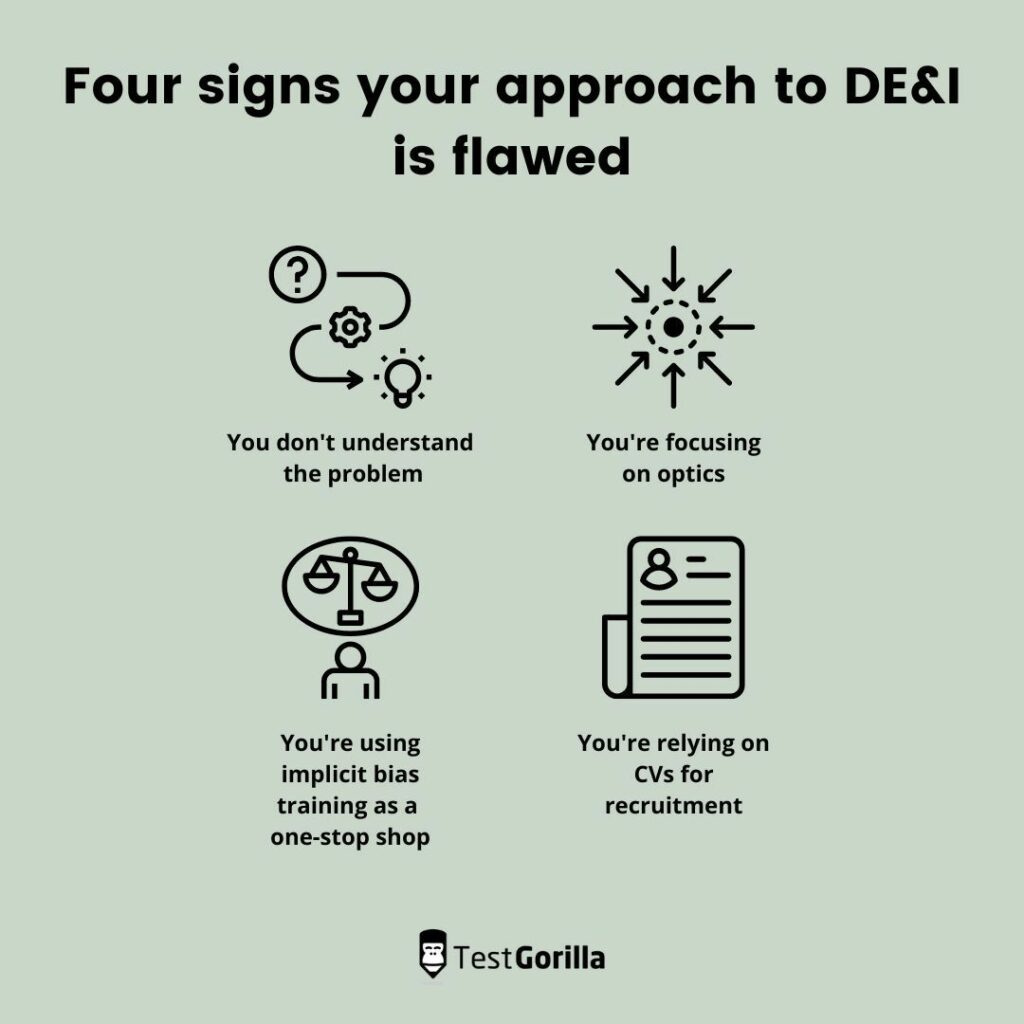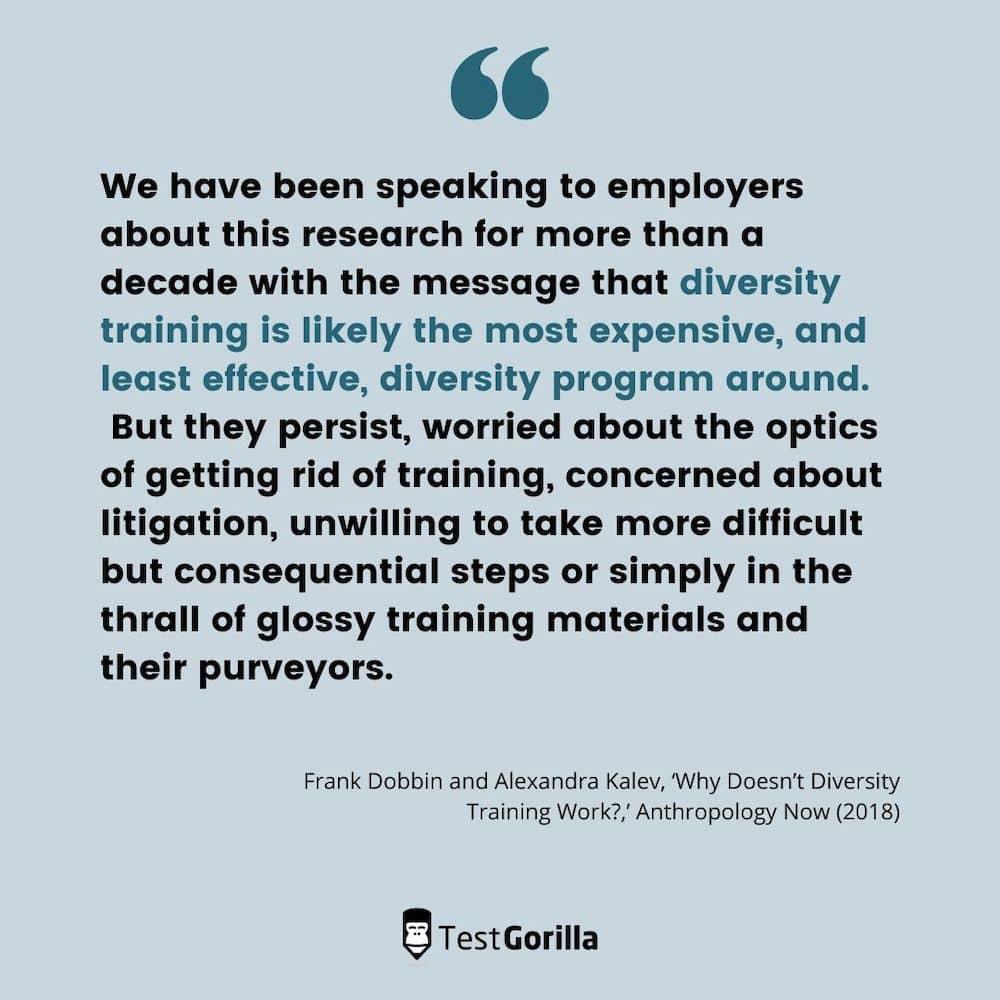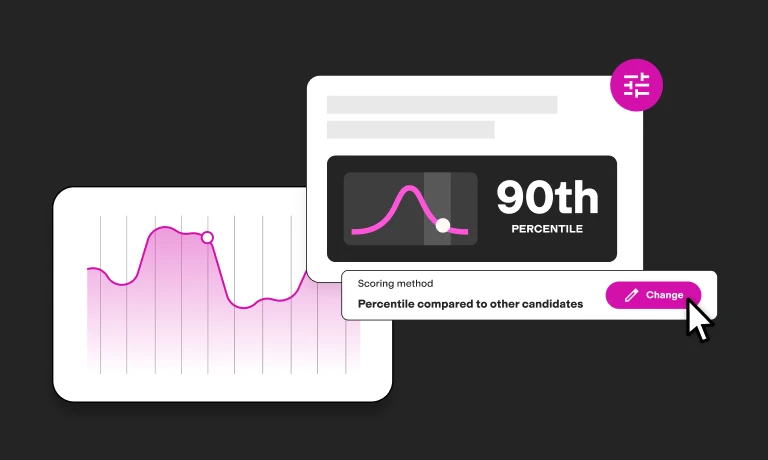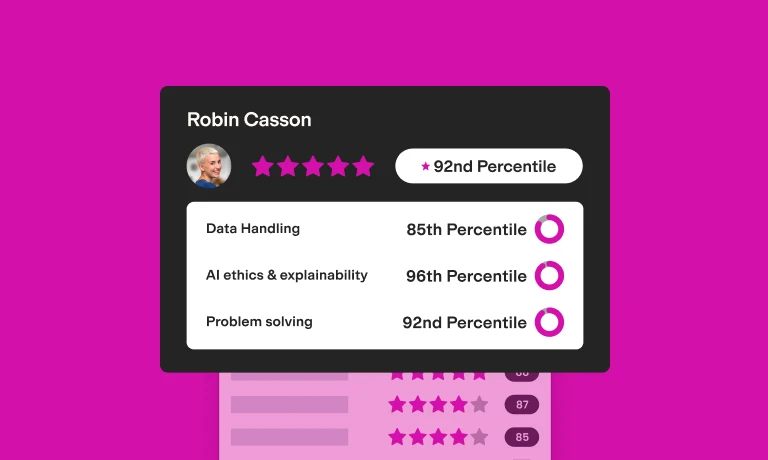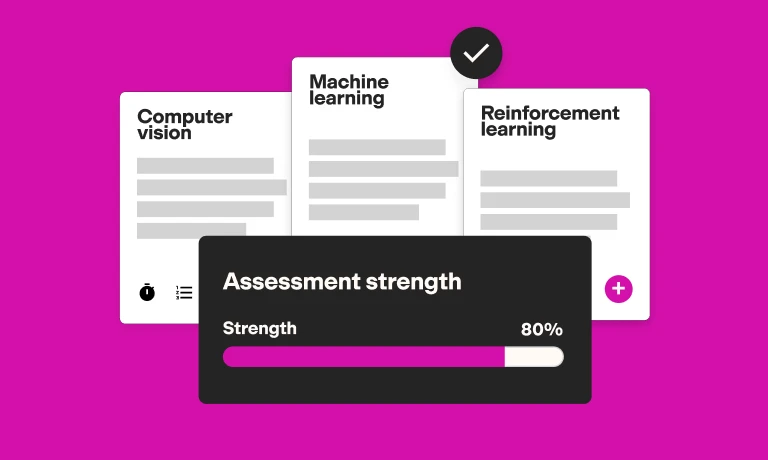If you’re a business owner, manager, leader, or HR person, you’ve likely been involved in diversity, equity, and inclusion (DE&I) initiatives, working to organize unconscious bias or diversity training for employees. If you’re in any kind of employment, you’ve probably begrudgingly or enthusiastically undergone such training. And if you spend enough time on LinkedIn, maybe you’re rolling your eyes: “Another blog post about diversity? Do we really need any more of these?”
Frankly, we do. DE&I initiatives are a staple for large workplaces; The US alone spends an estimated $8bn dollars a year on diversity training, and, according to a Boston Consulting Group report, around 98% of companies have a diversity program in place. But they’re not getting it right. According to the same report, only a quarter of workers from diverse groups can confirm the benefits of these programs.
Imagine you’re an aspiring ceramicist. You’ve been practicing for years, spending time at the pottery wheel and paying an insane amount of money for lessons and workshops to try to get better. Despite all this, you’re still terrible at it. Your pots are so bad that no one wants to look at them, or they break altogether, and your sessions at the wheel never seem to inspire encouraging results.
It’s a shame because a lot depends on your ceramicist credentials. If you were getting it right, you’d be able to make more money, and you’d have the power to bring joy to people with your beautiful pots. You’d make the world a better place. You have to ask yourself two questions. First – why am I bad at this? Am I being lazy, or do I need to change my technique, or the materials I’m using? Second – what can I do about it? Should I give up or follow my aspirations and experiment thoughtfully until I get things right? (NB: The world-changing pot possibilities are such that giving up is not an option; the same goes for DE&I.)
If you don’t change your approach, you’ll remain a failed ceramicist and the world will never know the full potential of your pots. In the same way, if we don’t keep having this conversation, then we won’t get better at DE&I. And if we don’t get better at DE&I, then we won’t see the benefits in performance and innovation that diversity can bring to businesses. More importantly, we won’t see the diversity, equity, and inclusion that would, like those pots, objectively make the world a better place.
In light of this, we bring you another addition to the rapidly snowballing diversity discourse. Unlike ceramics, it can be hard to tell whether your approach to diversity and inclusion is flawed or not; you can’t see the cracks in the glaze, or watch it leak as it fails to hold water. We can help.
Read on to learn about the four biggest signs that your approach to DE&I is flawed.
Table of contents
1. You don’t understand the problem
The lack of diversity and inclusion in the workplace is a social-justice issue, and your understanding of this issue will directly inform how you approach DE&I in the workplace. As Einstein supposedly once said: “If I had an hour to solve a problem I’d spend 55 minutes thinking about the problem and five minutes thinking about solutions.” So, what is the problem that DE&I initiatives strive to solve?
Bias, prejudice, and discrimination
The problem is that we hold biases, implicit and explicit, against certain groups of people, namely those who are different from us. Prejudice, discrimination, and inequality are the symptoms. These are all things that make the world an unfair place, fostering hostility and inequality between people and encouraging conflict and neglect.
Diversity is the practice of including people from a range of groups with different shared characteristics, such as age, class, disability, gender, race, and sexuality. Equity is the process of recognizing inequality and making adjustments to overcome prejudice (including systemic bias) and its effects. Inclusion is the action or state of including or of being included within a group, activity, or social structure.
All of these things are glaringly absent in places where they matter, like government offices, boardrooms, academic departments at universities, and even television screens. DE&I initiatives are a way to ensure women, people of color, LGBTQIA+ folk, those with disabilities, or anyone else discriminated against because of their identity, are not subject to bias, prejudice, or discrimination.
It can be hard to understand the gravity of this if you’re not someone who has to navigate bias, prejudice, and discrimination on a daily basis. Because of this, DE&I is often reduced to a box to be ticked, or a quota to be met. It’s important to spend time with the problem: Think and talk about it with the people who are affected by it, empathize, and be thoughtful about what needs to change.
2. You’re focussing on optics
It’s true that if things look bad then they probably are; a C-suite consisting entirely of straight white males, although a familiar sight, should send alarm bells ringing for any company. This being said, DE&I goes much deeper than how things look.
Representation is important because it has the power to shape the ideas we hold about people – with more women in government, for example, we’d be less likely to cling to stereotypes about them being unfit for leadership (this is also known as counter-stereotyping). But the roots of our biases are too deep and wide for representation alone to effectively counter them.
So you’ve got a trans woman, a gay man, and a woman of color on your leadership team. Do they feel supported, heard, and safe from harassment at work? Are their ideas and opinions valued just as much as everyone else’s? Do they feel just as likely to be rewarded or promoted for their work? If the answer to either of these questions is no, then your DE&I strategy is flawed.
It’s likely that you’re focussing too much on optics; you’ve got something that looks like representation or diversity, but equity and inclusion are missing. This is also known as tokenism: The practice of making only a symbolic effort to be inclusive, giving only the appearance of equality and inclusion by making “token hires” for diversity.
Don’t mistake diversity for inclusion and/or equity
Not all representation is meaningful or productive. A great example of this is Margaret Thatcher, the UK’s first female prime minister. She was famously coached to lower the tone of her voice – voters rate lower-pitched voices more highly for leadership potential, honesty, and intelligence. Instead of practicing inclusion and insisting on her authority, her advisors had her adjust to the whims of the public’s bias for deeper, masculine voices.
In addition, Thatcher introduced Section 28, a law that banned the discussion of same-sex relationships (or “the promotion of homosexuality”) in schools, leaving a homophobic legacy that still endures today. She also did nothing to help other women come up behind her in politics.
Former UK home secretary Priti Patel represents a similar problem. She recently admitted that under her own immigration laws, which systematically criminalize innocent and vulnerable asylum seekers, her own parents may not have been allowed to enter the country.
Both of these instances represented a step forward for diversity – women and people of color are chronically underrepresented in the UK government, and both Thatcher and Patel diversified the cabinet. They simultaneously represented a step back for inclusion: In both cases these politicians installed policies and ideologies to ostracize certain groups of people, fueling damaging stereotypes and actively putting people in danger.
In other words, the optics were misleading. If your company is looking diverse, that’s brilliant, but you need to dig deeper to make sure inclusion and equity follow. Diversity is about representation, inclusion is about involvement, and equity is about acknowledging and accommodating individual needs. Go beyond a headcount and try to understand the reality behind the numbers.
The best insights on HR and recruitment, delivered to your inbox.
Biweekly updates. No spam. Unsubscribe any time.
3. You’re using implicit bias training as a one-stop shop
Implicit-bias training, also known as unconscious bias or diversity training, is the bread and butter of DE&I initiatives. Its goals are predominantly to do with awareness-raising: programs involve conversations and activities to make participants conscious of their unconscious biases. Ideally, this reduces the chances of them acting in ways or making judgments that yield to these biases.
Unfortunately, mounting research demonstrates that implicit-bias training is not as effective as we might think. Mainstream strategies tend to involve a few hours of activities and/or discussion, which usually revolve around counter-stereotyping, perspective-taking, and introspection. Maybe you’ll be asked to go away and click through a PowerPoint or take a quiz.
There is evidence that these strategies can successfully raise awareness. There is even evidence that raised awareness equates to reduced implicit bias on the implicit association test (IAT). But the quality of this evidence is often dubious, with much research focussing on participant experience rather than trying to measure and quantify change (“what did you learn during this training? Did it help you change your behaviors?”).
Some studies have even found backlashes, where training activates negative stereotypes, incites complacency through feelings of moral licensing (where good behavior subconsciously justifies other bad behavior), or makes people feel as though someone is trying to control their behavior. Another crippling oversight within research is not following up – if raised awareness does trigger behavioral change, then it usually only lasts a short period of time.
DE&I deserves better
The bottom line is that there is no strong or conclusive evidence that implicit-bias training can effectively reduce unconscious bias – at least not in the way it’s currently being used. Implicit biases are the product of lifelong and ongoing exposure to negative assumptions and stereotypes; how could a one-off intervention be an effective counter to this? This links back to the first sign discussed in this blog post: A widespread belief that this kind of solution is adequate points to a mass misunderstanding of the problem it’s trying to solve.
Rather than a one-stop shop or quick fix for DE&I, implicit-bias training should be just the start. It’s not beyond redemption: the one thing it can reliably do is raise awareness, even if only for a short period of time, and most behavior-change frameworks note that knowledge is a vital tool for behavioral change.
Fighting inequality is a marathon, not a sprint, and DE&I initiatives should reflect this by being broad, consistent, thoughtful, well-researched and resourced. The behavioral scientist Francesca Gino outlines five elements of successful unconscious-bias training as follows:
Stressing that “you hold the power”: If training increases employees’ awareness of their bias, a crucial next step is for them to act on this awareness. Help them mute the voice in their head that says “I’m born like this; there’s nothing I can do about my unconscious biases” by emphasizing how capable they are of change and giving them concrete examples of how they might change their behavior.
Creating empathy: We have less empathy for people we see as different from us, so connecting and empathizing with a more diverse range of people is important. Holding small group discussions and offering frequent opportunities for perspective-taking are two ways of fostering empathy.
Encouraging interactions among people from different groups: This is closely tied to the point above. Ensure employees have opportunities to interact with a diverse range of people and reflect on these interactions. Representation is an enabler here – without diversity, these exchanges can’t take place.
Encouraging good practices and continued learning: Check in with employees and help them track their improvement. Feedback is key to continued learning: We don’t always understand how our behavior affects others unless they tell us. It can be useful to set up anonymous feedback systems.
Setting a broader strategy for broader impact: Participants in a survey of more than 500 employers reported taking training more seriously when it was accompanied by broad institutional support. Dedicate time and money to DE&I and review and rethink policies frequently.
4. You’re relying on CVs for recruitment
Last but not least, if you’re using CVs to hire, then you’re undermining anything DE&I-related big time.
The biggest barrier to DE&I is arguably situated at the point where applicants are accepted or rejected for a job role. Think about how much of the above depends on exposure to and empathy for people who are different to you. If your hiring pipeline is open to bias and throws candidates out because of details about their identity, then you’re not going to be able to diversify your workforce or build an inclusive and equitable environment.
CVs are still the mainstay for recruitment across the globe. They offer recruiters and hiring managers no evidence of the skills their applicants actually possess, instead displaying information about where and to what level they were educated, and where they’ve been employed previously.
Neither of these things is a reliable predictor of job success, and using them as the main data points for hiring decisions invites bias – someone who studied at an Ivy League school but is lazy and unskilled, for example, is more competitive than someone who didn’t attend a university but is a self-taught genius.
CVs incite gender and racial bias, too. A landmark study titled “Are Emily and Greg More Employable than Lakisha and Jamal? A Field Experiment on Labor Market Discrimination” showed that White-sounding names received a 50%higher callback rate. In addition, women are on average 30% less likely to get a callback than men with the same characteristics as them.
Eliminate hiring bias with skills-based hiring
The CV has been allegedly been around since 1482, and it’s time recruitment underwent a revolution.
Discriminatory hiring practices are arguably the biggest barrier to achieving DE&I in the workplace. Still, they’re often left out of conversations on the topic in lieu of discourse on unconscious-bias training.
Slowly but surely, a shift towards skills-based hiring is taking place – a recruitment strategy that omits the CV altogether, instead using pre-employment assessments to garner real evidence that candidates have the skills needed to do the job advertised.
Skills-based hiring is data-driven recruitment at its best: It takes personal information, education, and experience out of the picture, and focuses solely on the data that matters. If you can’t take the bias out of the hiring manager, you can always take steps to avoid letting their implicit biases influence their hiring decisions.
The shift to skills-based hiring is still in its infancy, with many employers using pre-employment assessments in combination with CV-sifting, but it’s certainly on the rise. What’s more, there’s already evidence of its effectiveness: In a study of more than 2,000 skills-based hires into senior roles, 52% of all successful candidates were women, up from a global average of 31%.
If recruitment bias is removed from the picture, DE&I can develop organically. When teams move from hegemonic to diverse, employees are better equipped to embrace equity and inclusion, and DE&I initiatives have a higher chance of being effective.
At TestGorilla, we believe in the potential of skills-based hiring to change recruitment for the better. And since broken hiring practices are unquestionably connected to failures to advance DE&I in the workplace, we know it has the power to change the world.
You've scrolled this far
Why not try TestGorilla for free, and see what happens when you put skills first.


